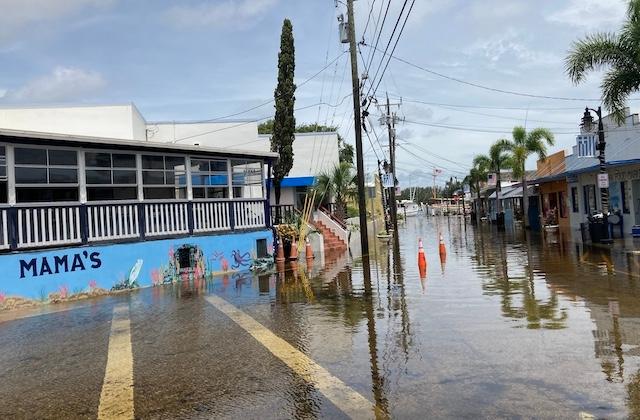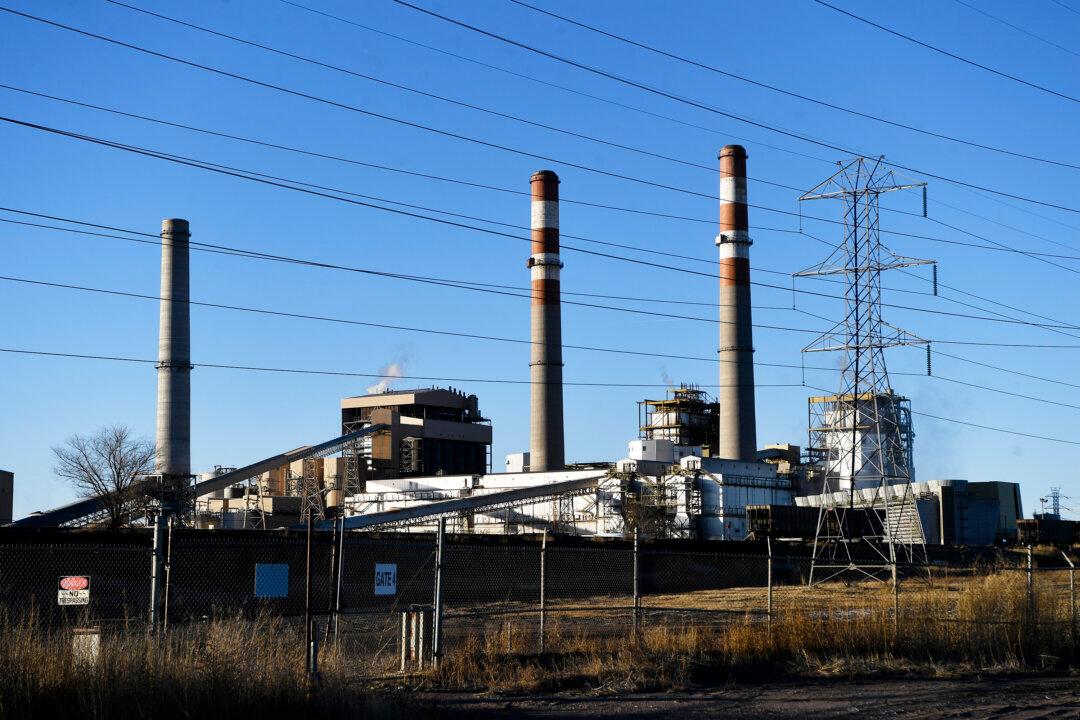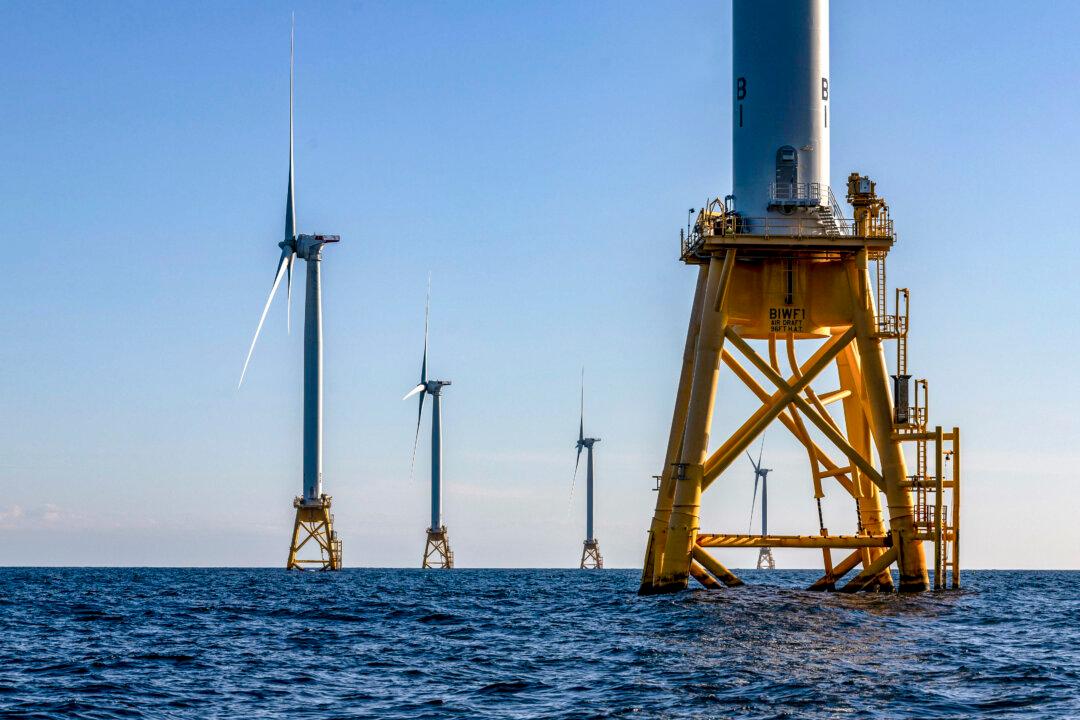TARPON SPRINGS, Fla.—At daybreak, the fishermen went down to the sea in water up to their hips to see if their ships were still moored to Anclote River piers or marooned on Dodecanese Boulevard, now a three-foot-deep canal.
The fishing boats were all there, riding high in the swollen river, bumping rhythmically against rubber dock camels, masts slightly a-sway but otherwise undamaged. They had survived Idalia’s big blow the night before.
“The hurricane went a bit further north than it was originally forecast and, so, we got real lucky,” Alan Fox, a sponge diver aboard the 44-foot Susie Sea, told The Epoch Times on Aug. 30. “The wind didn’t get too bad and water came up quite a bit. We definitely got some high water, but that’s not bad.”
“Not bad,” that is, compared to what could have happened in Tarpon Springs and in neighboring coastal communities along the bayous and sloughs of Florida’s Gulf Coast.
Early-model tracks projected landfalls near Homosassa and Crystal River, about 80 to 100 miles north of Tampa Bay, with storm surges of up to 12 feet in the swampy Nature Coast and at least seven to eight feet in Tarpon Springs.
Instead, the fast-formed storm quickly churned past Tampa Bay, its eye passing 125 miles west of Tarpon Springs nine hours before it made landfall as a Category 3 storm about 8 a.m. near Perry, about 50 miles southeast of Tallahassee and more than 185 miles north of Tarpon Springs.
In its bullet-train track to Florida’s Big Bend, Idalia moved too fast to wallop the Tampa Bay area with its 120-mile-per-hour winds and sustained drenching rains, but—as projected—it pushed a lot of water ashore in its wake, at least six feet of storm surge-propelled flooding in Tarpon Springs.
The day after, Idalia’s storm surge, combined with a high tide, left much of the Tarpon Springs Sponge Docks Exchange area, with its distinctive rows of Greek restaurants, inundated in thigh-high seawater.
Joshua Montgomery and his family were sweeping the sea into the street from their Vintage Clothing store on Athens Street.
“Literally, as soon as we opened the door this morning, we could see the water inside just pour out,” he said inside his narrow shop, dank and hot with the power cut off.
The good news was that the tide was receding. Water was streaming from the shop, trickling across the sidewalk, joining a tidal rivulet that was returning the sea to the river.
Mr. Montgomery told The Epoch Times that he’s owned Vintage Clothing for two years and, depending on the extent of damage, conceded, “We’re probably going out of business soon.”
But how much damage the store incurred from the storm surge was unclear, he said. Power was still on—although he had shut his off—but he was uncertain if he could or should turn the power back on.
“I wonder because it’s saltwater. So you’re wondering if it came up so high,” he pointed to the second level of shelf rack on the back wall, “you’re kind of wondering, like the electrical, the drywall, anything that’s in there. It’s like somebody, or some company or something, should have to come in and at least check out the buildings, right?”

Proud Greek Heritage
The streets were full of the sloshing curious, mostly residents of the tight-knit community, which claims to have the largest per-capita population of people with Greek heritage in the United States.Tarpon Springs is regionally renowned for its annual Jan. 6 crucifix dive in Spring Bayou, where as many as 70 teenage divers seek to be the first to pluck the cross from the bottom and bring it to the surface during the largest Epiphany celebration in the Western Hemisphere.
The town was founded by Greek sponge fishermen, a legacy recounted in the 1953 film “Beneath the 12-Mile Reef” starring Robert Wagner and Anthony Quinn, which plays continuously at the Sponge Docks Exchange visitor center.
Mr. Fox and his two shipmates aboard the 21-ton, 45-year-old Susie Sea are among the last of that legacy still diving for sponges in wetsuits and weight belts north of Tarpon Springs.
“We just came in about three days ago. We got our trip cut short” with the approach of Idalia, he said, noting that their 20 days at sea was 10 days short of their usual excursions.
In fact, Mr. Fox said, the Susie Sea was working off Steinhatchee on the Big Bend.
“They just got hit pretty bad and there’s, like, just one road to get in there,” he said. “That’s a hard place to get help to.”
The wooden ship was loaded with bundled sponges. Buyers will be coming soon, and the Susie Sea will return to the sponge beds again, according to Mr. Fox.
Maybe Idalia will do some good, he said.
“Actually, all the water has been so hot. A lot of stuff, it’s hard out here,” Mr. Fox said. “The visibility will be bad for a while, until everything’s shaken out, but it'll do some good” in churning up sediment and cooling northeastern Gulf waters.

Sponge Dock Sloshfest
Lucas McClain and Karyatis Xristou were among local high school students wading about Dodecanese Boulevard, checking in with businesses owned by neighbors they’ve known all their lives.Earlier, Mr. Xristou and his father had to beat their way through rising waters to get to the family-owned restaurant.
“It was all the way up to here,” the 16-year-old told The Epoch Times, pointing to his hip.
“It was the craziest thing I’ve ever seen. I’ve never seen anything like this in my life. I pray for the people out here because I’ve seen a lot of people’s houses got flooded, you know? And it’s really sad. I’ve never seen flooding like this in my life. I’ve never seen it like this.”
However, there could be some side benefits to the town’s main street being underwater, Mr. McClain said, scanning the street for a passing “big mouth billy bass.”
“I’m thinking about fishing right now,” Mr. Xristou said. “It’s the perfect time, actually.”
Susan Brooks of Susan’s Flags on Dodecanese was sweeping debris and grit from a parking lot. She was hoping to be back and busy the next day.
“You’d have to speak with a city person” about when the Sponge Docks would be reopened, she said. But good luck with that on this day.
“They’re all so busy cleaning up this mess,” Ms. Brooks said.

Mold: Hidden Cost of All That’s Lost
Michael Blackburn of Mold Solutions of Clearwater, a post-disaster remediation company, was on the scene at Hellas Restaurant as workers were squeegeeing water out the door.“We’re going to help them with the extraction of the water and the dehumidifying process to help get them back into business,” he said, noting that Hellas never lost power and kept its air conditioning running, which should help to limit mold growth.
Despite a good early prognosis that Hellas was spared significant damage, Mr. Blackburn said that won’t be certain for days.
“Boy, in situations like this, it could take five, seven days to get completely dry,” he said. “You know, you want to make sure you’re not having the possibility of microbial growth or anything like that. We want to be able to take care of everything at first go.”
It doesn’t take a storm to put water on Tarpon Springs’ streets. As with much of Florida’s coastal areas on both sides of the state, the city, which is wedged on a sand spit between Tarpon Bayou and the Anclote River, routinely endures flooding after heavy rains and, increasingly, during high tides even when not preceded by a deluge.
The post-storm tidal rise and recession being battled in Tarpon Springs was a familiar scene the day after Idalia, just one place within a mosaic of Florida Gulf coastal communities spared the hurricane’s rage but not the stubborn high water it literally drove to many’s doorsteps.
Idalia “was just like a really bad storm” that rolls through the summer nights on a regular basis, Christopher Deckman told The Epoch Times as he sloshed up Athens Street to check on a friend’s soap store, describing the flooded streets as “sad to see.”
“But,” he said, “it’s not the first time it’s happened. Flooding is a constant issue here, especially when there’s a lot of rain in a short amount of time” combined with high tides.
There was at least one business open on the Sponge Docks as the sun emerged in the early afternoon: Anclote Brew, a tap house with a broad shade awning.
“We got lucky” because the bar is on higher ground than other buildings nearby, and the locals were starting to gather, owner Bill Dennison said.
“It’s an unexpected day off, and they don’t want to stay home,” he said.

The neighborhood tavern is often where locals gather after a disaster, not merely to relax but to collect intelligence. It’s often where work parties to help a neighbor are formed.
And that’s “exactly” what’s happening at Anclote Brew, owner Kelly Dennison said.
For Jake Apinos, who was “born and raised” in the Tarpon Springs–Clearwater area, it was time for a cold one. He had kayaked the sloughs and bayous and surveyed the damage and flooding.
There was relatively little storm damage anywhere, he said, but the water—the water—was everywhere, he reported.
Peter Devine of Staten Island, New York, was enjoying a beer in the shade while his daughter, Stephanie, sipped an iced cranberry drink.
They were visiting his mother when Idalia busted up the Gulf. Last year, Ian did the same thing, Stephanie said. She wondered if maybe her dad should stop taking her to visit Florida in August.
However, Mr. Devine told The Epoch Times he was just grateful the lights were on and the beer was cold.
“My wife will be like, ‘It figures you'd find the only open bar,’” he said with a laugh.







